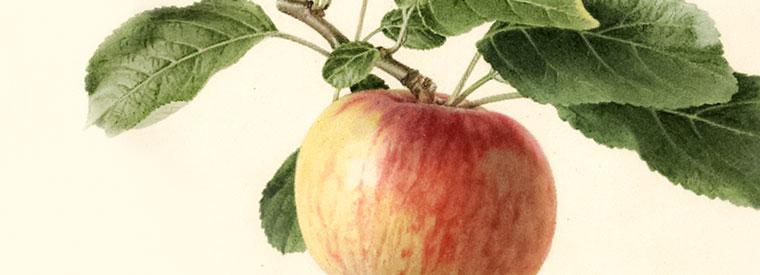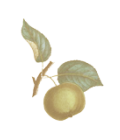From the founding of Jamestown to the time of Washington and Jefferson, every plantation owner made cider, drank cider, and bragged about his cider.

Fruit
TOLMAN SWEET was originally named Tolman Sweeting and has the synonyms Brown's Golden Sweet, Talman's Sweet and Tolman. It is thought to be a cross of Sweet Greening and Old Russet from Massachusetts, and was described in 1822. Others claim its origin is not known. Medium in size and rectangular to conic in shape, the pale-yellow skin sometimes has a red blush and lines of russet, and often a suture line is obvious. The white flesh is drier than juicy and of a pronounced sweet flavor. It bruises easily. The tree is spreading with long drooping branches and yields full crops annually. A late bloomer, it is hardy and vigorous and bears early. The dull, oval-shape leaf is a bluish-green with regular, moderately distinct serrations, and a heavy pubescence. The leaf is folded and distinctly waved. Tolman Sweet is susceptible to fireblight. It is an exceptionally good apple for baking and is particularly suitable for cider making because it contains 14.6% sugar that ferments to 7% alcohol. Beach in Apples of New York, 1905, wrote: "The fruit is generally much esteemed for certain culinary purposes as pickling, boiling and baking. The tree is a good grower, long-lived and very hardy. Manning, in 1891, called attention to the correct orthography, the name having been differently spelled by various authors and mentioned the supposition that the variety originated in Dorchester (Massachusetts). Flesh is white, firm, neither tender nor crisp, rather hard, moderately fine, rather dry to moderately juicy, decidedly sweet, good to very good." It ripens in late September and early October.
Ripening Period
- Early Fall - September
- Mid Fall - October



